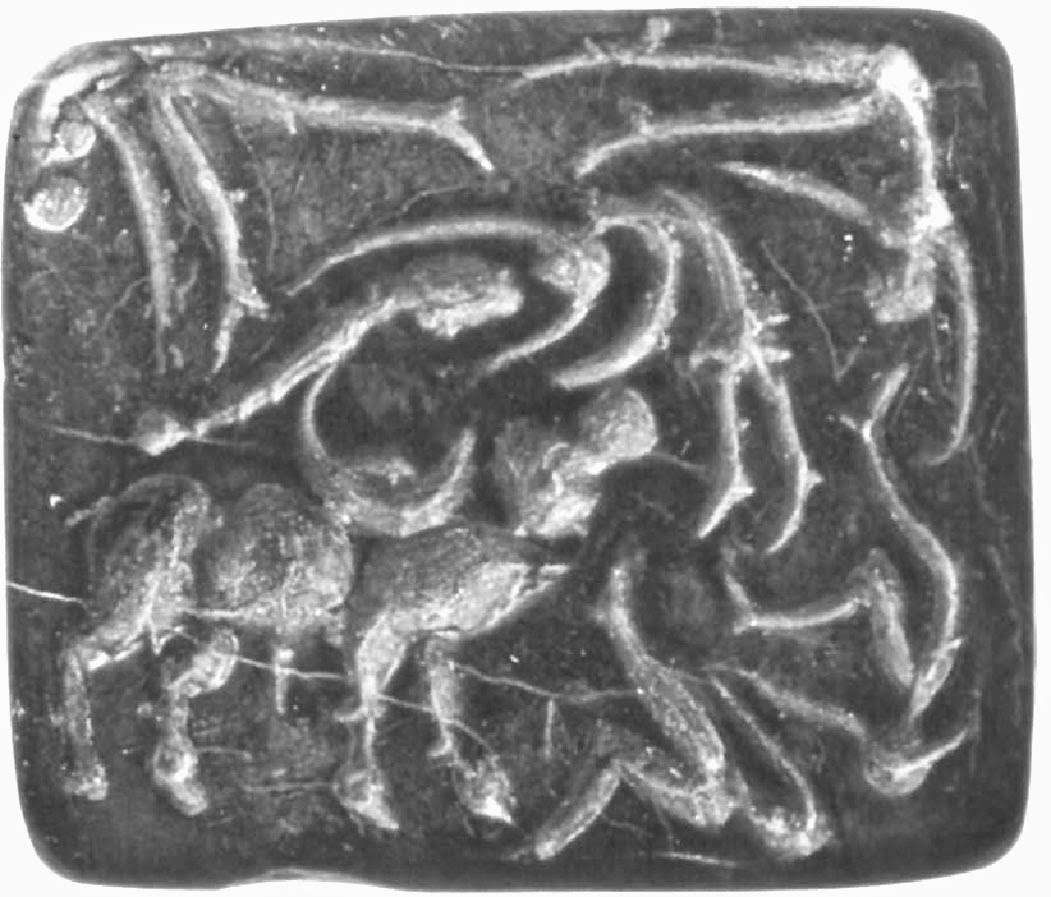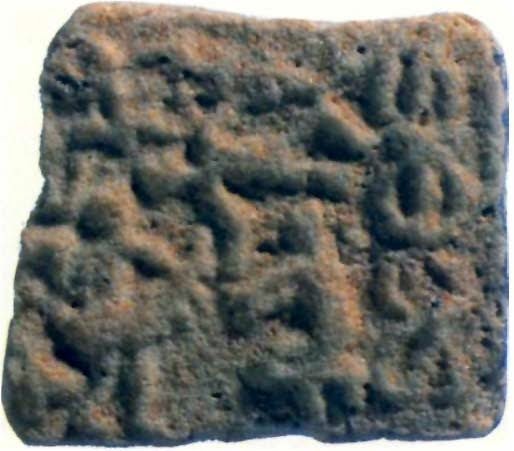Mirror: https://www.academia.edu/8710233/Indus_Script_khara%E1%B8%8Da_brief_memoranda_of_metalwork
https://www.academia.edu/8714300/Indus_Script_khara%E1%B8%8Da_brief_memoranda_of_metalwork
https://www.academia.edu/8714300/Indus_Script_khara%E1%B8%8Da_brief_memoranda_of_metalwork
This note points to further researches to trace the history of science and technology of Bronze Age in ancient India and interaction areas.
Indus Script constitutes a writing system which uses Meluhha cipher of rebus renderings of hieroglyphs. Decoding of the cipher enables identification of the related Meluhha language glosses. Indus script decipherment points to Meluhha as a proto-Indian speech, lingua franca, parole of Bronze Age Bharat. The roots of almost all Indian languages are traceable to Meluhha speech of Sarasvati-Sindhu civilization.
Meluhha (cognate mleccha) writing system is named by Vatsyayana as mlecchita vikalpa (i.e. Meluhha cipher).
Many pictorial motifs on Indus seals and artifacts of Bronze Age have been read rebus and deciphered as Meluhha hieroglyph metalwork catalogs.
Some of these catalogs provide, in brief memoranda, technical specifications related to metalwork together with information for trade (cargo) transactions.
karaḍā means 'hard alloy of metals such as gold, silver etc.' kharaḍa means a brief metalwork memorandum.
The homonyms which provide Meluhha hieroglyphs to write and document about this hard alloy metalwork are:
safflower, karaḍī;
double-drum, karaḍi;
fencing, karaṭi;
leopard, kharaḍā;
embossed knob, karaḍā
dul means 'cast metal'. The homonyms which provide Meluhha hieroglyphs to write down this technical specification of metalwork are:
drum, ḍhol;
drummer, ḍhòllu;
tumble/fall, ḍollu;
pair/two, dula.
The following Indus script inscriptions provide rebus readings of the Meluhha metalwork hieroglyphs.
Two safflower hieroglyphs flank the fire-altar worshipped by Tukulti-Ninurta I at Ashur.http://bharatkalyan97.blogspot.com/2013/11/tukulti-ninurta-worships-fire-god-at.html
Image may be NSFW.
Clik here to view.
Leopard weight. Shahi-Tump. Made by cire perdue (lost-wax casting) method. The weight is made of copper with lead coating. https://www.academia.edu/7789226/Locating_Aratta_of_Ancient_Near_East_using_Meluhha_hieroglyphs_and_defining_Anzu_and_the_start_of_Tin_Road_from_Meluhha’
Image may be NSFW.
Clik here to view.

Face of the lapis lazuli seal. http://tinyurl.com/q3xookp
miṇḍāl ‘markhor’ (Tōrwālī) meḍho a ram, a sheep (Gujarati)(CDIAL 10120) Rebus: mẽṛhẽt, meḍ ‘iron’ (Mu.Ho.)
Zebu: aḍar ḍangra ‘zebu’ (Santali) Rebus: aduru ‘unsmelted, native metal’; ḍhangar ‘blacksmith’. khũṭ ‘zebu’ Rebus: khũṭ ‘guild’
dhollu ‘drummer’ (Western Pahari) Rebus: dul ‘cast metal’ [Semantics reinforced by double-drum hieroglyph: karaḍi ‘double-drum’ Rebus: karaḍa ‘hard alloy’]
karaḍā ‘embossed knob’ Rebus: karaḍā ‘hard alloy’
Twelve notches: baroṭi ‘twelve’ bhārata ‘a factitious alloy of copper, pewter, tin’ (Marathi) dula ‘pair’ Rebus: dul ‘cast metal’. Thus, dulbaroṭi ‘a pair of twelve numeral count’ Rebus: dulbaroṭi ‘cast alloy of copper, pewter, tin’
Image may be NSFW.
Clik here to view.
 Kalibangan065. Cylinder seal.
Kalibangan065. Cylinder seal.kola ‘tiger’; kola‘woman’ Rebus: kol, kolhe‘smelter’; kol ‘working in iron, alloy’
dhatu‘scarf’ Rebus: dhatu‘mineral ore’
kūdī 'bunch of twigs' (Sanskrit) Rebus: kuṭhi 'smelter furnace' (Santali)
kuṭi ‘tree’ Rebus: kuṭhi‘smelter’
kolom‘three’ kolmo‘paddy plant’ Rebus: kolami‘smithy, forge’.
Clik here to view.
Mehrgarh. Terracotta circular button seal. (Shah, SGM & Parpola, A., 1991, Corpus of Indus Seals and Inscriptions 2: Collections in Pakistan, Helsinki: Suomalainen Tiedeakatemia, MR-17. A humped bull (water buffalo?) and abstract forms (one of which is like a human body) around the bull. The human body is tossed from the horns of the bovine.
m0312 Persons vaulting over a water buffalo. The water buffalo tosses a person on its horns. Four or five bodies surround the animal. Rounded edges indicate frequent use to create clay seal impressions.
Image may be NSFW.
Clik here to view.![]() Image may be NSFW.
Image may be NSFW.
Clik here to view.![]()
Clik here to view.
Clik here to view.

Impression of a steatite stamp seal (2300-1700 BCE) with a water-buffalo and acrobats. Buffalo attack or bull-leaping scene, Banawali (after UMESAO 2000:88, cat. no. 335). A figure is impaled on the horns of the buffalo; a woman acrobat wearing bangles on both arms and a long braid flowing from the head, leaps over the buffalo bull. The action narrative is presented in five frames of the acrobat getting tossed by the horns, jumping and falling down.Two Indus script glyphs are written in front of the buffalo. (ASI BNL 5683).
Rebus readings of hieroglyphs: ‘1. arrow, 2. jag/notch, 3. buffalo, 4.acrobatics’:
1. kaṇḍa ‘arrow’ (Skt.) H. kãḍerā m. ʻ a caste of bow -- and arrow -- makers (CDIAL 3024). Or. kāṇḍa, kã̄ṛ ʻstalk, arrow ʼ(CDIAL 3023). ayaskāṇḍa ‘a quantity of iron, excellent iron’ (Pāṇ.gaṇ)
2. खांडा [ khāṇḍā ] m A jag, notch, or indentation (as upon the edge of a tool or weapon). (Marathi) Rebus: khāṇḍā ‘tools, pots and pans, metal-ware’.
3. rāngo ‘water buffalo bull’ (Ku.N.)(CDIAL 10559) Rebus: rango‘pewter’. ranga, rang pewter is an alloy of tin, lead, and antimony (anjana) (Santali).
4. ḍullu to fall off; ḍollu to roll over (DEDR 2698) Te. ḍul(u)cu, ḍulupu to cause to fall; ḍollu to fall; ḍolligillu to fall or tumble over (DEDR 2988) డొలుచు [ḍolucu] or ḍoluṭsu. [Tel.] v. n. To tumble head over heels as dancing girls do (Telugu) Rebus 1: dul‘to cast in a mould’; dul mẽṛhẽt, dul meṛeḍ, 'cast iron'; koṭe meṛeḍ ‘forged iron’ (Santali) Bshk. ḍōl ʻ brass pot (CDIAL 6583). Rebus 2: WPah. ḍhōˋḷ m. ʻstoneʼ, ḍhòḷṭɔ m. ʻbig stone or boulderʼ, ḍhòḷṭu ʻsmall id.ʼ Him.I 87(CDIAL 5536). Rebus: K. ḍula m. ʻ rolling stoneʼ(CDIAL 6582).
Image may be NSFW.
Clik here to view.![]() m1406
m1406
Clik here to view.
m1406B
Annex details some metaphors, cultural markers of Bronze Age Levant, Ancient Near East and Meluhha glosses from India that is Bharat.
S. Kalyanaraman
Sarasvati Research Center
September 10, 2014
karaḍa -- m. ʻsafflowerʼ, °ḍā -- f. ʻ a tree like the karañja ʼ (Prakrit); M. karḍī, °ḍaī f. ʻ safflower, carthamus tinctorius and its seed ʼ. (CDIAL 2788). Rebus: करडा [karaḍā] Hard from alloy--iron, silver &c. (Marathi) kharādī ' turner, a person who fashions or shapes objects on a lathe' (Gujarati)
मेढा [ mēḍhā ] m A stake, esp. as forked. 2 A dense arrangement of stakes, a palisade, a paling. 3 A twist or tangle arising in thread or cord, a curl or snarl.(Marathi) Rebus: meḍ 'iron, copper' (Munda. Slavic)
dhollu ‘drummer’ (Western Pahari) Rebus: dul ‘cast metal’
The Meluhha gloss for 'five' is: taṭṭal Homonym is: ṭhaṭṭha brass (i.e. alloy of copper + zinc). Glosses for zinc are: sattu (Tamil), satta, sattva (Kannada) jasth जसथ् ।रपु m. (sg. dat. jastas ज्तस), zinc, spelter; pewter; zasath ् ज़स््थ् ्or zasuth ज़सुथ ्। रप m. (sg. dat. zastas ु ज़्तस),् zinc, spelter, pewter (cf. Hindī jast). jastuvu; । रपू्भवः adj. (f. jastüvü), made of zinc or pewter.(Kashmiri). Hence the hieroglyph: svastika repeated five times. Five svastika are thus read: taṭṭal sattva Rebus: zinc (for) brass (or pewter).
*ṭhaṭṭha1 ʻbrassʼ. [Onom. from noise of hammering brass?]N. ṭhaṭṭar ʻ an alloy of copper and bell metal ʼ. *ṭhaṭṭhakāra ʻ brass worker ʼ. 1.Pk. ṭhaṭṭhāra -- m., K. ṭhö̃ṭhur m., S. ṭhã̄ṭhāro m., P. ṭhaṭhiār, °rā m.2. P. ludh. ṭhaṭherā m., Ku. ṭhaṭhero m., N. ṭhaṭero, Bi. ṭhaṭherā, Mth. ṭhaṭheri, H.ṭhaṭherā m.(CDIAL 5491, 5493).
Image may be NSFW.
Clik here to view.![]() h182A, h182B
h182A, h182B
Clik here to view.
 h182A, h182B
h182A, h182BThe drummer hieroglyph is associated with svastika glyph on this tablet (har609) and also on h182A tablet of Harappa with an identical text.
dhollu ‘drummer’ (Western Pahari) Rebus: dul ‘cast metal’. The 'drummer' hieroglyph thus announces a cast metal. The technical specifications of the cast metal are further described by other hieroglyphs on side B and on the text of inscription (the text is repeated on both sides of Harappa tablet 182).
kola 'tiger' Rebus: kol 'alloy of five metals, pancaloha' (Tamil). ḍhol ‘drum’ (Gujarati.Marathi)(CDIAL 5608) Rebus: large stone; dul ‘to cast in a mould’. Kanac ‘corner’ Rebus: kancu ‘bronze’. dula 'pair' Rebus: dul 'cast metal'. kanka ‘Rim of jar’ (Santali); karṇaka rim of jar’(Skt.) Rebus:karṇaka ‘scribe’ (Telugu); gaṇaka id. (Skt.) (Santali) Thus, the tablets denote blacksmith's alloy cast metal accounting including the use of alloying mineral zinc -- satthiya 'svastika' glyph.
Annex details some metaphors, cultural markers of Bronze Age Levant, Ancient Near East and Meluhha glosses from India that is Bharat.
S. Kalyanaraman
Sarasvati Research Center
September 10, 2014






